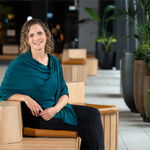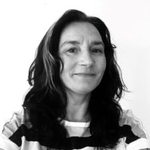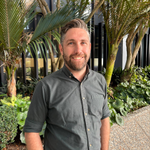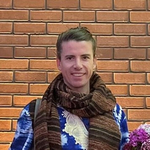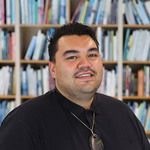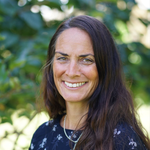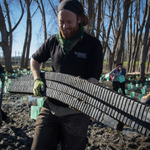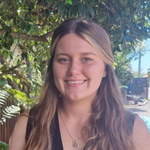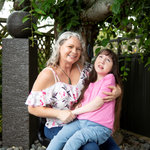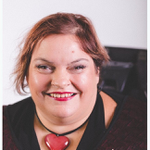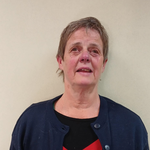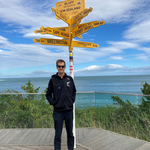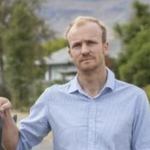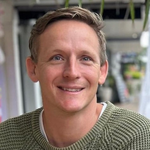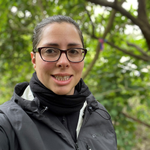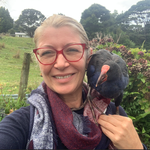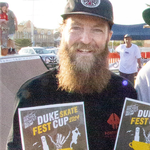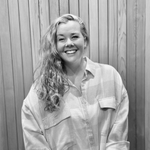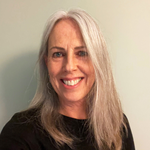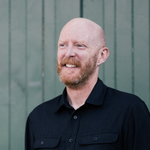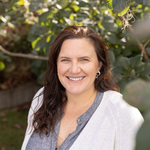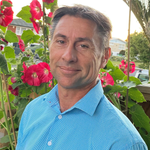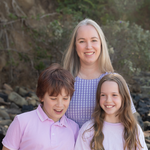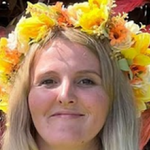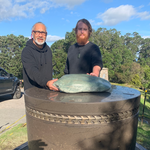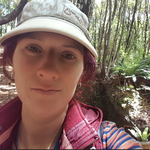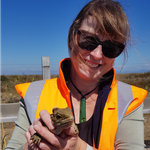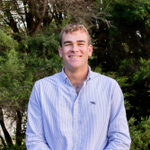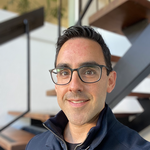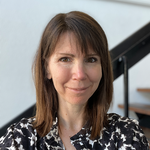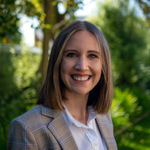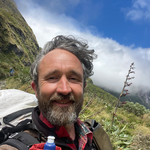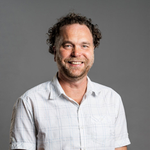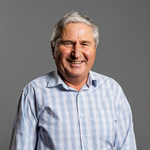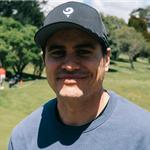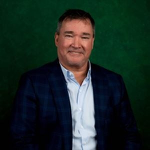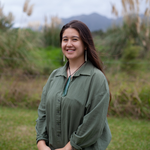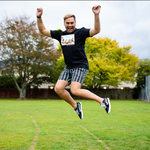- Registration
Dobson Foyer, Ground Floor
- Opening Mihi Whakatau • Ngāi Tūāhuriri
Plenary room - Rakaia
- Mayoral Welcome
Philip Mauger - The Mayor of Christchurch
- MANAAKI WHENUA • Opening Keynote • Takapūneke Reserve
Paul Devlin•Debbie TikaoPaul Devlin (Christchurch City Council) & Debbie Tikao (Ōnuku Rūnanga)
Takapūneke has a rich history and is of immense cultural importance to Ngāi Tārewa and Ngāti Irakehu.
The story of this whenua is both shocking and complex, yet according to historians, this piece of Akaroa
coastline “provide(s) an even richer set of narratives around the Nations identity than Waitangi.” The event
that occurred at Takapūneke in 1830 played a substantial role in shaping New Zealand’s political
framework. Events since 1830 exemplify the collision of two significantly contrasting world views, and as
such, spans over two hundred years of anguish, conflict, and change.
This presentation will take you on a journey of innovation, deceit, desecration, and sorrow to the current
day - and reimagining this landscape, sharing values, and establishing a true partnership. The story
commences in 1820 with the establishment of a thriving trading centre at Takapūneke, followed by a
massacre that sent shock waves back to London, decades of battle with local bodies over the desecration
of this sacred land through to the healing work we're doing today and the blessing of stage one landscape
works on Matariki 2022.
The Takapūneke Reserve Landscape design is the culmination of many years
of work, wānanga, relationship building, and dreaming. It is an expression of mana
motuhake and an expression of what can be achieved through a meaningful Te Tiriti
o Waitangi partnership.
Today, Ōnuku Rūnanga and Christchurch City Council stand side by side to realise
the vision by those members of Ōnuku Rūnanga who built the foundation for this
relationship. They wanted:
• to share the story of Takapūneke with the world
• to safeguard and grow mātauranga Māori
• to restore the mauri and mana of the land and people - Morning Tea/ Paramanawa
Exhibition Hall 1, Ground Floor
- MANAAKI WHENUA • Love where you live
Michala LanderMichala Lander (GHD)
We all have a love story that connects us to place. It could be our connection to Papatūānuku (the land),
the landscape, the people or the history and heritage. Whatever the connection, it is the reason for
choosing the place we live. Too often, these features that make our places unique are overlooked and
undervalued in infrastructure planning. Consequently, our public space suffers through a lack of provision
or from poor maintenance of the existing facilities.
It is time we shifted the paradigm to move beyond creating liveable cities, to focus on what makes them
loveable. GHD has developed the loveable framework, an approach to planning that celebrates our
connection to place and demonstrates the importance of understanding and planning with long term
social value in mind.
This is achieved by making sure that all infrastructure is considered to be social infrastructure for people
now, and communities of the future. We put people at the centre of planning, acknowledging their shared
connection to place can create strong connections, pride and ownership making them resilient and
powerful. It means looking beyond infrastructure as having one function, but having many opportunities.
So that, its not just a road; it’s a place to recreate, a place to gather, a place for commerce and a piece of
history.
For recreation professionals, this is our opportunity to maximise the value of infrastructure by embedding
public space, recreation and community facilities into its planning and design. By applying a loveable lens
we can broaden the scope of what infrastructure delivers. Imagine a bridge that creates a recreational
trail or a train station with a new public space. The outcome is infrastructure that connects us to place,
improving social outcomes and higher economic benefits. What's not to love? - MANAAKI WHENUA • Repurposing Land for Nature Based Solutions
Dr Bex DolleryDr Bex Dollery (Waimakariri District Council)
In recent times, the world has experienced disrupted weather systems resulting in an increase of extreme
weather events. Closer to home, in the Waimakariri District, significant rainfall events wreaked havoc the
residents’ lives during each year from 2021-2023 prompting Civil Defence Emergency Operations
procedures, home evacuations and several hundreds of service requests to the local authority regarding
damage to private and public infrastructure.
In addition to the personal physical and mental health effects of these extreme weather events, the
increased surface water impacts the local economy and industries, the environmental values of terrestrial
and aquatic habitats and species, and the ability of ecosystems to provide services such as water and air
purification, nutrient cycling, recreation opportunities and resources such as food and medicine.
Efforts to adapt and mitigate to projected flooding events is happening across Aotearoa New Zealand
including alternatives to the usual “grey infrastructure’ methods. The benefits of using blue-green
infrastructure alongside other mitigation and adaptation techniques gaining recognition and was
highlighted in a recent publication titled “Sponge Cities”.
Considering the benefits of repurposing land to incorporate nature-based solutions to mitigate the climate
and biodiversity crises, the Waimakariri District, the Council purchased an 85 ha area of land in 2023. The
land had previously been used for agriculture but was often flooded during the wetter months. The land
purchase was strategic to explore the potential for the land to protect and enhance the biodiversity and
ecosystem services, enhance the cultural opportunities in the District, become a nature-based solution to
mitigate effects of climate change, and to recreate further opportunities for people to experience nature
and recreational activities. We will outline and explore the benefits of nature-based solutions to a number
of environmental and societal issues. - MANAAKI WHENUA • Rewilding Our Parks • SPONSORED BY GREEN BY NATURE
Duncan MacDougallDuncan MacDougall (Hamilton City Council)
In 2023/24, the Hamilton City Council experimented with a no mow project that transformed 13 of the city’s parks into grass and wildflower meadows. The Parks and Recreation team aimed to create a different and wild landscape that would offer new and seasonal attractions for the public and assess the impacts of this initiative.
The trial had five main objectives:
• To enhance the biodiversity of the parks by providing habitats for various flora and fauna.
• To create aesthetic appeal by adding colour, texture, and diversity to the parks.
• To create spontaneous play opportunities by inviting people to explore, discover, and interact with the meadows.
• To reduce mowing maintenance requirements.
• To reduce greenhouse gas emissions though the saving of fuel use.
The no mow project was a legitimate and successful land management practice that achieved its objectives and received positive feedback from the public. The trial faced initial scepticism from the public who were concerned about the appearance, safety, and functionality of the meadows. However, by the end of the trial, the majority of the feedback was supportive and appreciative of the project. The usage data also showed that the trial sites had increased visitation rates, in some cases up to eight times higher than previous years. The biodiversity of the parks also improved significantly, as the meadows hosted a variety of plants, insects and birds. The meadows also created opportunities for spontaneous play, as people were encouraged to walk, play and relax in the wild environment. The meadows also reduced the need for mowers over five months, resulting in a reduction in carbon dioxide emissions. The no mow project demonstrated that grass and wildflower meadows can be a viable and beneficial alternative to conventional grounds management in urban parks. - Lunch/Wā Kai
Exhibition Hall 1, Ground Floor
- MANAAKI TANGATA • Our Decarbonising Journey
Craig TaylorCraig Taylor (Citycare Property)
Citycare Property Towards 2030 Strategy has an ambitious goal – Our business is decarbonised and we
are transparent. We are committed to taking action to address the climate emergency. We now have just
over five years to make sure we hit the target included in Towards 2030. So where are we at and what are
our plans to get there?
Alongside much of our sector, decarbonisation is part of a longer transformational journey. This year we
will finalise our carbon reduction plan and reduction targets to help limit global warming. We are
conducting our first climate risk assessment and building the capability to measure and report more
indirect (Scope three) emissions.
We have completed an Environmental, Social, Governance (ESG) Strategic Roadmap which outlines our
four key guiding principles (Tangata, Kawanatanga, Kaitiakitanga, Auahatanga), goals, and measures for
each of these principles and a plan for how we will uphold these principles.
Citycare Property believes in Net Zero and we are committed to reducing our carbon footprint, responsibly
managing our waste and managing and minimising our environmental impact and the effects that climate
change will have on our day-to-day operations.
In our industry vehicles play a huge part in the way we all do business. Emissions reductions are now a
significant focus for all parties and the solution lies in a collaborative approach. Sharing knowledge and
lessons learnt will ensure we have the best chance of effecting change.
This presentation will outline the journey Citycare Property is on and discuss lessons learnt, the merits of
electrification and a range of other tactics which we intend to explore in relation to our fleet in the
immediate future.
Join us as we expand on our decarbonisation journey. - MANAAKI TANGATA • Lancaster Park Redevelopment: how we changed a derelict stadium into a new community sports park
Dr Richard GibbsDr Richard Gibbs - Christchurch City Council
Lancaster Park has long held a special place in many Cantabrians’ hearts. First developed as a privately owned park, in 1919 the Victory Park Act vested title to the land in the Crown for the park to be used for cricket, rugby, and other sports, amusements, entertainment, and events. The land was to be held in trust for those activities in commemoration of the Canterbury soldiers who died in World War 1.
Fast forward to 2011 when the park was last known as the AMI Stadium, and when the park and buildings were severely damaged by the 2010-2011 Canterbury earthquakes. A feasibility study to look at rebuilding the stadium was completed but repair or rebuild was discounted due to the significant risks. A decision was made in December 2016 to decommission the stadium including demolition of the buildings and grandstands. Christchurch City Council completed the demolition of the earthquake-damaged stadium in December 2019.
After discussing the future of Lancaster Park with Ngāi Tahu, the Crown and the then Linwood-Central-Heathcote Community Board, the Council agreed that the park should continue to be used for sporting and recreational purposes, as required under the Christchurch City Council (Lancaster Park) Land Vesting Act 2008.
In September 2019, the Council released a spatial plan for developing the park in response to community need for more recreational areas and sports grounds in the area. There was a lack of open space in the Philipstown area around the park, and significant demand for more access to space for sports fields and associated facilities in the south-east of the city.
The spatial plan was a first look at how the site could be used once the stadium was gone and was put together following discussions with the major sporting codes about the future of the site. A cultural narrative was developed by Matapopere and incorporated into the design for the spatial plan. To be consistent with the Vesting Act, the primary purpose of the land was for sport with ancillary activity relating to more passive recreation.
The redevelopment of the park has involved six main areas, these being:
•the sports fields and supporting sports infrastructure
•the supporting community buildings
•a historical recognition and visitor experience area
•a feature play space
•native planting areas, landscaping and stormwater flow management
•restoration of the Memorial Gates, built to commemorate the sacrifice of Canterbury athletes during World War I, which have been retained as an important heritage feature of the park, following feedback from sporting and community groups
The Memorial Gates now form a distinctive entrance into the park. They are a long standing feature of the park and many people will remember walking through them on their way to events on the park before the 2010–11 earthquakes. Their restoration is an acknowledgement of Lancaster Park’s rich history.
This talk looks at the options that were initially considered with regard to the future of the park, from retaining its original use to commercially developing the land. The talk will show how the park was eventually brought back into use as a community park in mid-2022, focus on the lessons learnt and will discuss the redevelopment work that is still on-going. - Afternoon Tea, Paramanawa
Exhibition Hall 1, Ground Floor
- TĀKARO • The Hidden Scope: Leveraging Scope 3 Reporting for Collaborative and Sustainable Supplier Partnerships
Kacey GambinKacey Gambin (Kompan)
The need for widespread sustainable actions and partnerships within local government parks and
recreation teams is no secret. With growing concerns over climate change and the urgent need to address
greenhouse gas (GHG) emissions, it is crucial for public entities to adopt sustainable practices and
engage in partnerships that prioritise environmental responsibility.
This presentation will investigate why local parks teams need to consider the 3rd scope of the GHG
protocol and examine its characteristics and importance. Scope 3 emissions encompass the indirect GHG
emissions generated throughout a product's life cycle, including the extraction of raw materials,
production, distribution, use, and end-of-life phases. By working with organisations who report on Scope 3
emissions, local government teams can proactively address their carbon footprint beyond their own
operational boundaries.
This presentation will also demonstrate how incorporating Scope 3 reporting fosters transparency and
accountability within supplier relationships. By evaluating organisations based on their reported emissions
(including Scope 3), parks teams can make informed, data-driven decisions that align with their
sustainability goals, promoting environmentally-conscious practices throughout the supply chain.
Additionally, this session will emphasize the positive impact of Scope 3 reporting on reducing overall
emissions. By encouraging suppliers to measure and disclose their emissions, local government teams
can identify opportunities for emissions reductions across the entire value chain. This collaboration can
lead to innovative solutions, such as sourcing materials from low-carbon suppliers or implementing
energy-efficient production techniques.
Finally, the presentation will address potential challenges and provide practical strategies for overcoming
them. It will offer guidance on how to engage and educate suppliers about Scope 3 reporting, foster
collaboration, and establish meaningful sustainability goals. Case studies and best practices from other
public entities will be shared to inspire and guide parks teams in their sustainability journeys. - MANAAKI WHENUA • Day 1 Closing Keynote • Kauri Protection in the Waitākere Ranges. A partnership approach to safely re-opening tracks.
Edward Ashby•Stuart Leighton•Richie Mundy-CastleEdward Ashby (Te Kawerau ā Maki), Stuart Leighton (Auckland Council) & Richie Mundy-Castle (reNature)
Kauri in the Waitākere Ranges Heritage Area have been affected by Phytophthora Agathidicida (PA, known
colloquially as Kauri Dieback Disease). In order to protect the forest, in December 2017 Te Kawerau ā Maki
(TKM) performed a rāhui ceremony (a customary prohibition on access and use) as a quarantine and
conservation measure over the Waitākere Forest in West Auckland. TKM Chairman Te Warena Taua said at
the ceremony the rāhui is to save the forest for future generations.
Te Kawerau ā Maki & Auckland Council demonstrated the value of a partnership approach when
developing and delivering the Kauri Protection Programme in the Waitākere Ranges Regional Park to reopen
a portion of the track network. Since 2018 the two organisations have worked collaboratively to reopen
tracks and allow users to safely return to the Ngahere while protecting the forest ecosystems.
Technical support has been provided by reNature to assist with engineering solutions and ensure New
Zealand Track standards have been met. The project team has been guided by the following key principles
which will be presented:
• Holistic approach
• Adaptive management
• Standard design
• Minimal impact design
• Early Engagement
• Ecosystem regeneration
• Physical separation of track users from Papatuanuku
• Reversibility
• Minimise plastic use within the Ngahere
The partnership approach has ensured that infrastructure delivered is aligned with local Māori values and
delivers a resilient solution for the both the community and the Ngahere. - Wrap of the Day & Closing Karakia
- Exhibitor Drinks
Exhibition Hall 1, Ground Floor
- Registration
Dobson Foyer, Ground Floor
- Day Two Opening/Housekeeping
- TĀKARO • Day 2 Opening Keynote Toitū Te Tangata, Toitū Te Tākaro – Maintenance and Renewal of Nature Play | Māra Hūpara (Traditional Māori Play)
Aynsley Cisaria•William HattonWilliam Hatton & Aynsley Cisaria (Boffa Miskell)
Increasingly, tākaro such as hūpara and/or tākaro-taiao (nature-play) are included within papa-tākaro (playspace)
across Aotearoa. The (re)use of naturally-occurring materials such as rākau (timber - treated or
natural), kōhatu (rocks) and whenua (earth/soils) are being incorporated into playspace design, reflecting
local pūrākau (stories) and offering more holistic approaches to play.
With the use of biodegradable materials -- in particular rākau (timber - treated or natural) -- there is little
precedent for how to best maintain these features, and uncertainty around renewing and/or letting nature
take its course and decaying in place (a Māori concept of returning to the whenua). There is a gap in
knowledge, and growing urgency to develop a solution towards papa-tākaro maintenance and renewal.
At present there is no process for natural play and more importantly māra hūpara to be adequately
maintained and/or renewed in a way that respectfully considers tikanga of mana whenua.
Speakers Aynsley Cisaria and William Hatton (Boffa Miskell) have undertaken research to develop a toolkit
/ guidelines that will support councils and communities in maintaining their natural play and papa-tākaro
assets in the long-term with a process that respects mātauranga Māori.
Gaining insight and perspectives from clients, Council, play specialists and mātanga, this research seeks
to increase understanding and offer reassurance that communities can confidently install papa-tākaro
designs, knowing they have an appropriate, effective solution (toolkit and guidelines) to maintain and
ensure the longevity of their assets.
This presentation will provide an overview of the research undertaken to-date which is expected to be
complete by Matariki 2024.
Tākaro (play) is an important part of how we come together and connect with others in our surroundings.
Planning for maintenance and renewal is vital in ensuring lasting play experiences and value for
communities ensuring ‘toitū te tangata, toitū te tākaro’. - TĀKARO • ZOOM SESSION • Uniquely Fit: Designing Outdoor Fitness Experiences for Every Age and Ability
Morten ZachoMorten Zacho (KOMPAN)
In 2024, physical activity is increasingly recognised as vital for holistic well-being, and designing outdoor
fitness sites is a pivotal role local government plays in encouraging and facilitating exercise among
diverse user groups.
This presentation, led virtually by Morten Zacho from the KOMPAN Fitness Institute, delves into the
nuanced considerations and innovative approaches involved in crafting outdoor fitness environments
tailored to the needs and preferences of various users. Just like a fingerprint or DNA, each person has
fitness needs that are unique to them.
Drawing upon extensive research and practical experience, Morten will explore the multifaceted
dimensions of outdoor fitness site design. Central to his discourse is the recognition of the diverse
demographics comprising potential users, ranging from children and adolescents to adults and seniors,
each with unique physical capabilities, interests, and motivations. By understanding these nuances,
designers can create inclusive spaces that cater to a broad spectrum of individuals, fostering a culture of
fitness and well-being within communities.
After this session, attendees will understand the significance of a holistic and user-centric approach to
designing outdoor fitness sites, wherein considerations for diversity, accessibility, safety, and
technological integration converge to create environments that inspire and empower individuals to lead
active and healthy lifestyles. Through insights gleaned from the KOMPAN Fitness Institute's expertise, this
presentation offers invaluable guidance for designers, planners, and stakeholders invested in promoting
community well-being through outdoor fitness initiatives. - Morning Tea/ Paramanawa
Exhibiton Hall 1, Ground Floor
- MANAAKI TANGATA • Food Forest • Community Connection between Park, School and local neighbourhood
Gina Scott•Megan PriscottGina Scott (Waipā District Council)
Te Awamutu Food Forest is two years into its journey, has consumed hundreds of community volunteers
hours and has the potential to be a tourist attraction for the town. What started out as one person’s vision
to create a community garden quickly turned into a future sustainable fruit corridor which will eventually
weave its way through the town and is accessible to the whole community.
A small group of volunteers act as a steering group for the project, meet once a month and consider
themselves ‘jack of all trades, masters of none’.
Council works in partnership with the project group, making spaces available which align with the future
cycleway and walkway networks, has supported financially with funding through contestable funds,
provided upskilling opportunities for the volunteers and their Community Advisor supports the project.
Working alongside local businesses and community volunteers three sites have been planned, planted and
nurtured with suitability, accessibility and sustainability being the centre of all decision making.
Collaboration with community includes neighbouring schools acting as kaitiaki of the sites and using the
spaces as outdoor classrooms, local businesses either supplying staff to work on volunteer days,
donation of goods & services or sponsorship. Tree maintenance is being managed by the Waikato Wintec
Horticulture cohort and Waikeria Prison will be involved, with work groups bottling excess fruit which will
be returned to community, some to be sold and some made available through pātaka kai sites across the
town.
As the project progresses the final destination is becoming more obvious – a sustainable, accessible fruit
tree corridor which will enable all community to access fruit to support food security and family health
needs all year round.
Gina Scott
Community Advisor at Waipa District Council- MP
Megan Priscott
Food Forest
- MANAAKI TANGATA • Pāpāmoa Hills: Exposing the rich cultural history through a respectful, collaborative and slow burning co-design process.
Kat MacMillan•Matt PeacockeMatt Peacocke (BoP Regional Council) & Kat McMillan (Toi Moana)
The Pāpāmoa Hills are among the most significant historical and archaeological landscapes in Aotearoa
and involves a number of iwi who date back to the arrival of the Arawa canoe around 1350. It has 1,630
individual archaeological features including Pā sites, and wahi tapu, but has stood as the poor cousin to
the mighty Mauao, Mt Maunganui.
From 2017 - 2023 a collaborative process was undertaken to co-design a new experience on the hills, and
a new entry to the park, celebrating and recognising the complex history, culture, and ecology; revealing to
the public the hidden magical heritage known to the local tangata whenua.
Kat MacMillan will take you through the respectful working arrangement and collaborative approach the
Bay of Plenty Regional Council has with the local Iwi; how we worked together to form a trusting
relationship within such a contentious/passionately known to the local tangata whenua, to reveal stories
filled with war, love and over 700 years of Māori heritage.
Matt Peacocke will address how the design team worked together with Iwi, BOPRC, artists, ecologists,
engineers, and planners in a respectful and engaging deliberative manner towards a final resolved design
that celebrates the history and uniqueness of the site. A potentially contentious and tricky site, turned into
an enjoyable project, done right.
Key points:
o Co-design vs informed design.
o Design for the site and the people – not the ego.
o Allow good process, earn trust.
o Listen, learn, absorb, and respond thoughtfully.
o Allow time.
o Foster creativity. Work with artists. Enrich the design.
o Focus on the experience and the place.
o Expose the ecology – improve soil, fauna, flora.
o Design for 5yrs and to 500yrs, and between.
o Share narrative - telling stories of the cultural history, led by the Tangata Whenua. - MANAAKI WHENUA • The Journey of Braided River Revival: Connecting community and awa ki uta ki tai
Greg Stanley•Anna IvanovaGreg Stanley, Sarah Worthington & Anna Ivanova (Environment Canterbury)
Canterbury Regional Council’s Whakahaumanu Ngā Awa ā Pākihi/Braided River Revival programme
focuses on reviving the mauri (life force) of the region’s braided rivers through collaboration and
connection.
The programme signals a shift from river management focused solely on flood protection, to one that also
facilitates collaborative efforts to protect and enhance the range of values that make Waitaha
Canterbury’s braided rivers unique and important ecosystems.
Balancing flood protection with environmental enhancement is not new but we now have a rare
transformational opportunity to support the unique character of braided rivers ki uta ki tai by taking a
holistic approach to how we manage them, putting the health and mauri of braided rivers at the forefront
of all the work we do in rivers.
By interlacing community, mana whenua, private and public landowners’ values, actions and pride, this
approach focuses on river resilience and recognises the interconnections between water, land and coast,
and everything that exists within the river corridor from source to sea, including the way we connect with
them and the services they provide.
This session will share the journey of Whakahaumanu Ngā Awa ā Pākihi / Braided River Revival to date
including how the programme was formed, what benefits and progress have been achieved, and what
initiatives are underway. The session will also highlight how the programme is integrating nature-based
solutions and holistic management into Canterbury Regional Council’s/Environment Canterbury’s work,
and how it is collaborating with partners, stakeholder and communities in the interest of protecting,
enhancing and restoring the mauri of braided rivers and supporting a resilient community with the tools to
facilitate change.
Speakers Greg Stanley (Regional Lead–Braided River Revival), Sarah Worthington (Braided River Revival
Advisor) and Anna Ivanova (Regional Lead–Rivers Delivery) from Environment Canterbury will traverse the
programme’s purpose and learnings to date. - Lunch/Wā Kai
Exhibition Hall 1, Ground Floor
- MANAAKI TANGATA • PANEL: Insights from Lived Experiences of Disability in Accessing Play, Parks, and Open Spaces
Sophie Elstob Gradwell•Ethan Hamilton-Currey•Jenn Hooper•Rachel Mullins•Petronella SpicerEnhancing the accessibility of Play, Parks and Open Spaces across Aotearoa can significantly improve community resilience, foster greater social cohesion, and increase participation in play and active recreation.
This panel discussion provides an opportunity to hear directly from individuals with lived experiences of disability, and those involved in Disability Advisory roles. Panellists will share insights on what quality, accessible and inclusive spaces mean to them, and will offer suggestions on how delegates can enhance better Parks, Play and Open Space experiences for people with disabilities in their respective roles.
All of us have an opportunity to enhance the accessibility of Play, Parks and Open spaces - join this panel discussion to find out more!
Additionally, this session serves as an introduction to the Outdoor Accessibility Workshop scheduled directly afterwards in Dobson 3 (2:15pm - 4:15pm - afternoon tea break included). - MANAAKI WHENUA • Environmental Sustainability Guide for Spaces & Places
Glenn McGovern•Mark Bates•Nick YannakisGlenn McGovern (Sport NZ), Mark Bates (HDT) & Nick Yannakis (Beca)
Sport NZ has developed guidelines to help Territorial Authorities and other sport and recreation
organisations, navigate the issues relating to environmental sustainability that affect spaces and places.
The guidelines have been developed in collaboration with Architecture HDT, BECA and a project steering
group. This session will walk participants through the contents of this new guide, and discuss ways that
your organisation can identify and adopt environmental sustainability actions. - Afternoon Tea/ Paramanawa
Exhibition Hall 1, Ground Floor
- MANAAKI WHENUA • Sustaining Urban Vitality: Unveiling the Urban Forest Plan and Its Implementation
Toby ChapmanToby Chapman (Christchurch City Council)
Urban trees are being recognised for the crucial role they play in fostering environmental resilience,
enhancing air quality, and promoting overall well-being in densely populated areas.
In recognition of the pivotal importance of our urban trees, Christchurch City has recently adopted its first
Urban Forest Plan which at its heart, aims to increase the amount of tree cover across the city and ensure
it is resilient for future generations.
What is an Urban Forest? At its essence, an urban forest refers to the interconnected network of trees
within an urban environment, including trees within our parks, streets, and even on those within residents
back gardens.
This talk will touch on the important role that urban trees play in mitigating the impacts of climate change,
promoting biodiversity, and fostering a healthier, more sustainable urban environment. I will talk about our
Urban Forest Plan, how it was adopted and where the challenges were.
Finally, I will go over how we have already begun implementing actions within the plan including an
overview of our Urban Forest Planting program currently underway. - TĀKARO • Day 2 Closing Keynote • Play Opportunities Through Environmental Design
Dr Damien PuddleDr. Damien Puddle (Invercargill City Council)
In traditional local government approaches, the most important childhood pastime, play, is relegated to
playgrounds, parks, and formal sport facilities. These spaces are incredibly important, but they are the
beginning of play, not the end. When prescribed spaces are the only focus, it overlooks the needs children
have to play and connect with the rest of their environment, whether urban or natural.
A novel design approach, Play Opportunities Through Environmental Design (POpTED), has been
developed to support local government and its partners to appropriately respond to the need for providing
for play beyond playgrounds.
Modelled off Crime Prevention Through Environmental Design (CPTED) and Active Design principles,
POpTED aims to embed thoughtful play planning and design thinking into project requirements and
delivery. It has the potential for incorporation at the district plan, technical specifications, and codes of
practice level, as well as in project management and design stages.
Attendees will be encouraged to consider how they can include POpTED into their areas of work and
influence so they can contribute to creative city-wide play enablement beyond traditional play spaces. This
will ensure that informal play is a key component of all well-functioning urban environments for current
and future generations of children. - Parks Leaders Forum Update
- Conference Close & 2025 reveal
- Parks Awards Gala Dinner
Waitaki Room, Level 1


